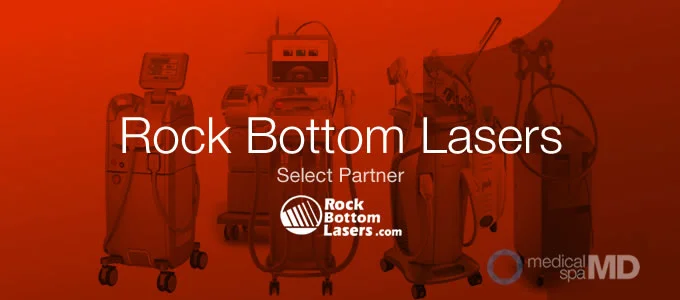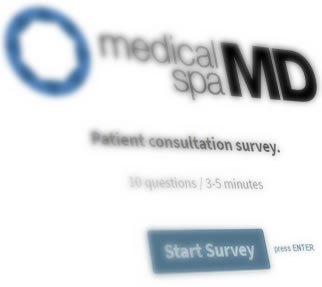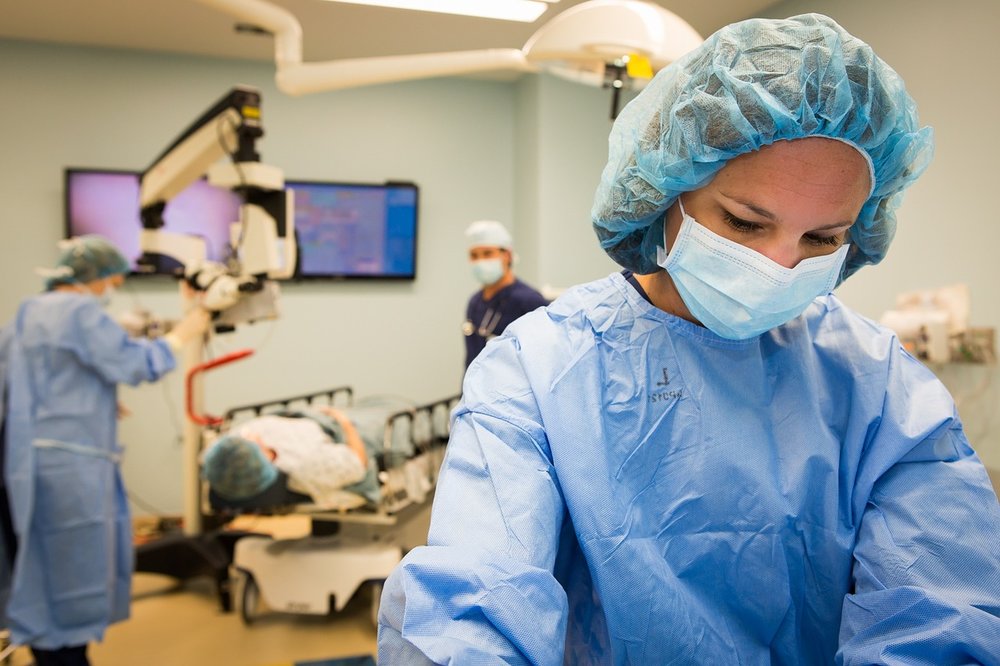Vaginal rejuvenation is one area of cosmetic medicine where OBGYN's are actually leading the way. Surgery, lasers, filler injections, and RF tightneing are all being used. Should you take a look at adding labiaplasty, vaginoplasty, vaginal tightening or rejuvenation to your services?
OBGYN's have been making inroads into cosmetic medicine for more than a decade with some of the nonsurgical treatments (Botox, fillers, lasers) but the actually have a big head start on vaginal rejuvenation front and the laser and RF companies are increasingly marketing to them as a 'first choice'.
It's clear that female genital rejuvenation is in demand across the board and many clinics are adding it in some form to their services.
One study showed that women are being influenced by increased media attention to the appearance of their genitals. In the study, most participants (95%) frequently examined their own labia minora (LM). Almost half of the participants (43%) found the appearance of their LM important, and 7% had considered LM reduction.
If you extend those number just to your own patient base, you can see that there's plenty of demand if you're positioning and marketing these services correctly.
So what treatment options are available for most cosmetic clinics? Generally they fall into three areas; lasers (ablative and non-ablative), Radio Frequency (RF), and some different modalities around filler injections. Below is some information to get you started, but we'll be following up by providing in depth looks at individual devices, service histories, patient satisfaction and efficacy.
Lasers
Lasers are probably the the most common current treatment modality and we've included a list of some of the players here.
Laser-based devices
FemiLift | Alma Lasers | Fractional CO2 Laser | 3 Tx at 4–6 wk intervals
MonaLisa Touch | Cynosure | Fractional CO2 Laser | 3 Tx at 6 wk intervals
IntimaLase | Fotona | 2,940-nm non-ablative Er.YAG | 2 Tx at 8 wk intervals
Petite Lady | Lutronic | 2,940-nm Er:YAG | 3 Tx at 2 wk intervals
Studies show a pretty good satisfaction by patients with these laser treatments. Ablative lasers (e.g. CO2 and Er:YAG) have lesser side effects based on different research (Vanaman et al., 2016; Karcher and Sadick, 2016). Many patients reveal their sexual activity has improved after the treatment and they are satisfied by the procedure. In one study that explored CO2 to treat-vulvo-vaginal atrophy, there was a 91.7% satisfaction rate among the participants in the study. In the studies we reviewed there are no significant reported complications with ablative lasers but lasers are highly dependent upon the skill level of the clinician so it's hard to say what those rates are in real-world environments.
Non-ablative lasers have shown efficacy as well, but there was one adverse effect: mucosal burn in one study, which eventually healed. We did look at another study that reported that lasers were effective, but a few of the study’s patients that opted out of treatment after a 24-week follow-up due to complications (Gambacciani et al., 2015).
Radiofrequency (RF)
RF is an alternative for lasers and show similar efficacy and patient satisfaction. There are a number of players who are offering this RF tech. (There are others that may not be included here for a variety of reasons.)
None of these treatments require anesthesia, and on average, the treatment duration spans 15 to 30 minutes. Patients report tolerable warmth but usually not pain. There's no down-time and patients can resume their normal activities the same day
Radiofrequency-based devices
ThermiVa | ThermiAesthetics | Temperature-controlled radiofrequency | 3 Tx at 4–6 wk intervals
ReVive | Viora | Bipolar radiofrequency | 4-6 Tx at 2–3 wk intervals
Venus Fiore | VenusConcept | Multipolar-radiofrequency with pulsed electromagnetic field | 3 Tx at 1 wk intervals
Viveve System | Viveve Medical | Patented radiofrequency | 1 Tx
Ultra Femme 360 | BTL Aesthetics | Monopolar radiofrequency | 3-4 Tx at 1 wk intervals
Pelleve | Ellman International | Monopolar radiofrequency | 3 Tx at 2–3 wk intervals
Studies here that show that it's a viable treatment modality. Patients responded well to the treatments - there were also some reported complications in these studies - but overall the results are similar that of with lasers.
Study: Radiofrequency treatment of vaginal laxity after baginal delivery: nonsurgical vaginal tightening.Vanaman et al. 2016
Results: No adverse events were reported; no topical anesthetics were required. Self-reported vaginal tightness improved in 67% of subjects at one month post-treatment; in 87% at 6 months (P<0.001). Mean sexual function scores improved: mv-FSFI total score before treatment was 27.6 ± 3.6, increasing to 32.0 ± 3.0 at 6 months (P < 0.001); FSDS-R score before treatment was 13.6 ± 8.7, declining to 4.3 ± 5.0 at month 6 post-treatment (P < 0.001). Twelve of 24 women who expressed diminished sexual satisfaction following their delivery; all reported sustained improvements on SSQ at 6 months after treatment (P = 0.002).
Conclusion: The RF treatment was well tolerated and showed an excellent 6-month safety profile in this pilot study. Responses to the questionnaires suggest subjective improvement in self-reported vaginal tightness, sexual function and decreased sexual distress. These findings warrant further study.
Study: Vaginal rejuvenation using energy-based devices - Karcher and Sadick (2016)
Results: ...Results from the study showed that after 1month, post-treatment self-reported vaginal tightness significantly improved in 67% of subjects and in 87% at 6months. Mean sexual function scores also improved, and no adverse events were reported.
Lastly, in Fistonić et al.’s (2016) work, RF is effective also in non-invasive labial laxity. Similar to vaginal rejuvenation, it improved their participants’ sexual function and satisfaction.
Study: Monopolar Radiofrequency Device for Labial Laxity Improvement - Noninvasive Labia Tissue Tightening - Fistonić et al.’s (2016)
Results: An average 2.9 (of maximum 4) points improvement rate in vulvar appearance was observed (P < 0.01). Mean of the total FSFI score enhanced from initial 75–87% (P < 0.001). Resultant 4.7 (18%) points increase was achieved. Ninety four percent of subjects reported mild to none discomfort during the treatment. No adverse events during the study course were reported.
Conclusion The present study demonstrates the positive effect of focused monopolar RF device for non-invasive labia tissue tightening. The treatment is effective and safe with high patient satisfaction.
In a study conducted by Hamori (2014), the author suggests that three to four sessions per month shall be done to achieve best results and satisfaction.
Possible complications with RF? The reported complications of using RF however include leukorrhea and abdominal discomfort. According to studies, the efficacy of the RF treatment lasts up to 12 months.
Injectables: Filler injections, autologous fat injections
While less commonly used than RF and lasers, injectables treatments (hyalurnonic acid, autologous fat) are being used for genital rejuvenation. These are generally used to increase size of a specific area to decrease laxity rather than 'shrinking' tissue as with lasers and RF. There have been a number of studies on this and these treatments do offer some benefits; reversible, cheaper for patient, no technology costs for clinician.
Study exploring the use of HA for the labia majora: Labia Majora Augmentation with Hyaluronic Acid Filler - Fasola and Gazzola (2016)
Results: A total of 31 patients affected by mild to moderate labia majora hypotrophy were treated with 19 mg/mL HA filler; 23 patients affected by severe labia majora hypotrophy were treated with 21 mg/mL HA filler. Among the first group of patients, one underwent a second infiltration 6 months later with 19 mg/mL HA filler (maximum 1 mL). A significant improvement (P < .0001) in GAIS score was observed, both in the scores provided by the patients and by the doctor. A greater relative improvement was observed in patients affected by severe hypotrophy. No complications were recorded.
Hexsel et al. (2016) also conducted a similar study using Macrolane VRF 20 (originally used to augment the breasts, which is discontinued by Q-Med due to the side effects). In their study, the researchers injected around 14 to 120mL of soft-tissue fillers on the labia. No adverse complications arose from the treatment.
There are some other treatments that also deserve mentioning here.
G-Spot Amplification: Supposedly a way of increasing sexual gratification, G-spot shots involve injecting HA fillers into that area to increase friction during intercourse. Other fillers (collagen, autologous fat, silicone) have been used but it seems that HA is the most common.
O-Shot: Something different here. O-shots use injections of platelet-rich plasma (PRP) injected into the clitoris and upper vaginal wall, intended to stimulate stem cells to grow new tissue. While there are some patients who express satisfaction, there's not been much study of this.
Most results lead to women feeling more satisfied about how their sexual activity became better, and sexual function has significantly improved. There is still a lack of reported outcomes regarding vaginal rejuvenation using fillers, but if you're in a situation where you're just investigating where these types of treatments might fit in your services offering, fillers may be a place to start.
Thoughts, ideas or comments welcome.



























